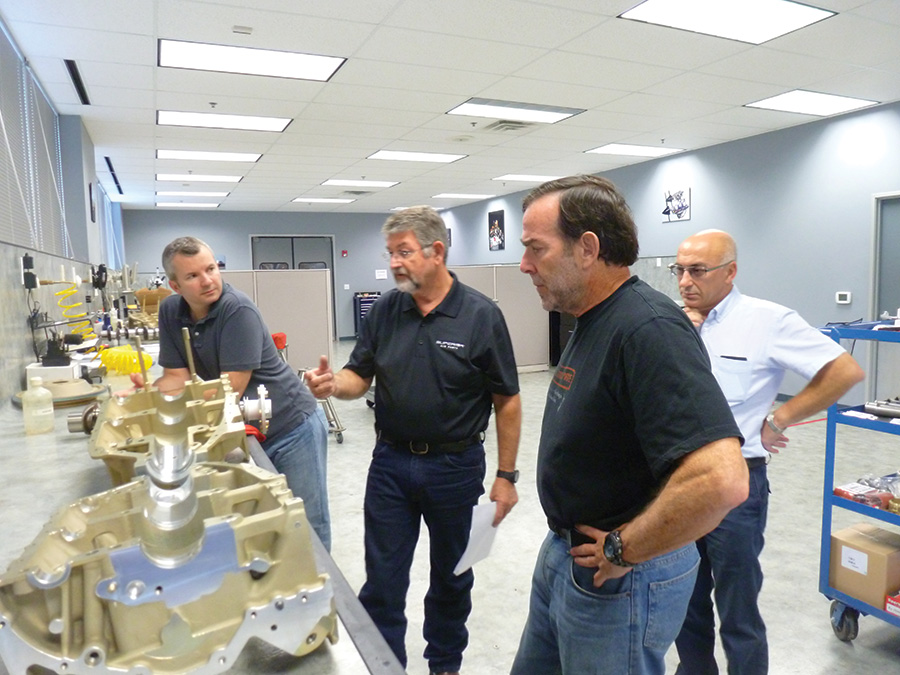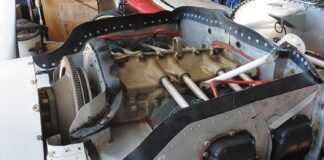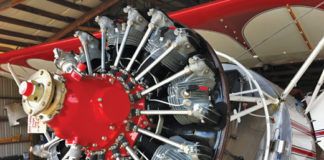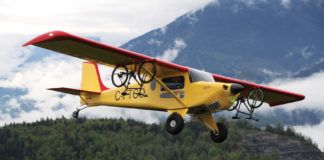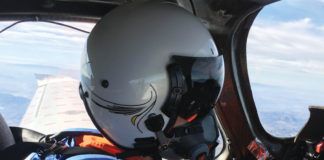Most homebuilders build their airframes with very little help beyond family and an occasional friend. Some of us build our avionics panels, wire and plumb the systems, paint our progeny, and sew the upholstery. But very few of us build the engines upon which we so depend. Adding engine building to the list of a homebuilder’s accomplishments may soon become as common as wiring an avionics panel, thanks to Superior Air Parts recent reestablishment of their once highly successful Engine Build School. Buy one of Superior’s XP engines and you’ll have the option to build it under the careful tutelage of one of their experienced technicians. Or, if you prefer, you can watch a technician assemble your engine while you document the entire process in photographs.
Superior recently invited KITPLANES to send two of our staff to the two and a half day XP Engine Build School at their Coppell, Texas facility. Since we hadn’t purchased an engine, Louise Hose and I observed a technician build an XP-400, while a customer assembled an XP-360 on the adjacent bench. Our experience suggests that although the course tuition of $1,000 adds yet another steep price tag onto your project, the experience is priceless for someone who hasn’t previously built an engine.
Class is Back in Session
The closing of the Engine Build School with Superior’s bankruptcy in 2008 disappointed homebuilders. But the school is back and new graduates are already busy installing their engines. Jay Mastri from Chicago completed an engine at Superior in September that he is currently installing in an RV-7A. Rick Hayes-Roth (California) needs two engines for his Velocity V-Twin and came to the school to learn more about the engines as he assembled one himself.
The school fully engaged the facility’s capacity for four concurrent engine builds before the company’s bankruptcy. Now, as they revive the school, the first two “prototype” classes each had only one customer/builder, but it’s not hard to look a few months into the future and anticipate full bookings year-round. The curriculum closely follows Engine Build School 1.0—two and a half days of hands-on learning—but Superior is carefully listening to its students in an effort to tweak the program and cut down on non-productive time.
The XP-Engine Build School provides an excellent opportunity for homebuilders to get a good understanding of the engine they are putting into their airplanes, and the more engine-savvy or brave builders will gain the knowledge and hands-on experience to perform engine maintenance.

Introductions
We arrived at Superior’s facility just north of the Dallas-Fort Worth International Airport at noon and met classmates Rick Hayes-Roth and Arturo Jaen; instructors/engine builders Darrell Ingle and Abel Martinez; Superior’s customer service manager, Brent Henman; and Dennis Henson, the company’s director of production. Once the obligatory introductions and a quick overview of the upcoming two and a half days were completed, these smart educators recognized that one can’t learn on an empty stomach, so lunch for all of us was the next order of business. During lunch, we learned a little more about everyone’s story—why each student was taking the class, the employees’ history with the company, and the work history of our instructors. Darrell had worked at American Airlines and Lockheed Martin and holds an A&P certificate. Abel, the company’s most experienced engine builder, has been with Superior since 1997. When students like us aren’t slowing him down, Abel can build an IO-360 engine in a day and a half.
A PowerPoint presentation about Superior’s company history, its product lines, the major parts of the engine, and the tools and materials needed for assembly educated us while our lunches digested. A tour followed, featuring their well-stocked part warehouse and the company’s Quality Assurance (QA) department, where batches of incoming parts are tested for conformity to quality standards. Any parts that fail inspection are returned to the supplier. The QA employees were a busy group as they used various measuring tools to determine whether engine parts met Superior’s specifications.
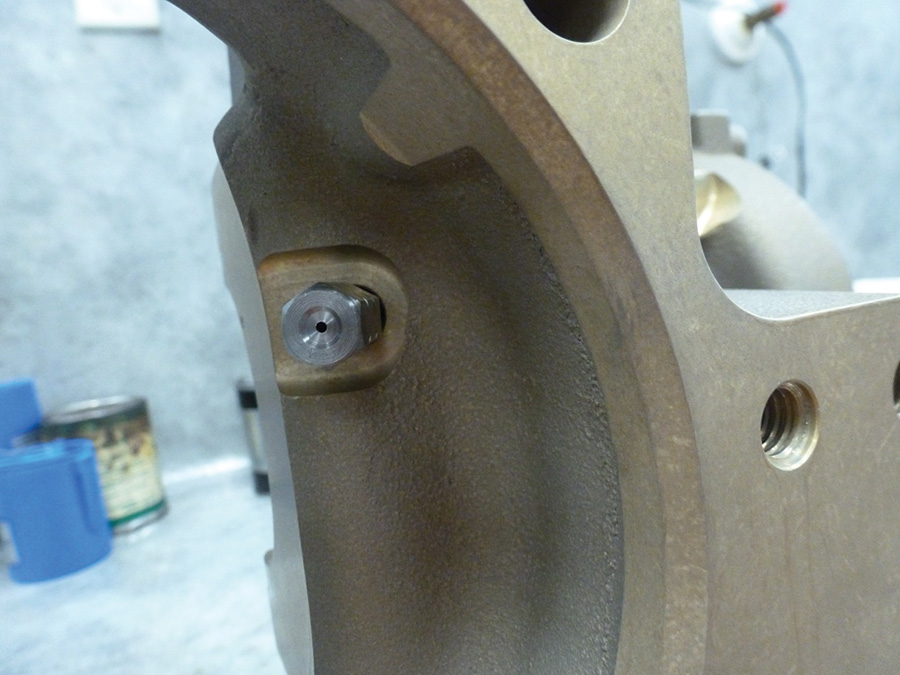
Superior uses in-house engineering, but suppliers produce all parts to the company’s specifications and quality standards. By all appearances, the company devotes a lot of time and floor space to ensure that parts sent by the suppliers are up to snuff. When asked about consumer preferences regarding the in-house production of parts compared to using suppliers, Superior’s chief of engineering and QA explained that their system benefits their customers because Superior can easily reject any parts below its standards without having invested money into their manufacture. The key, he said, is to maintain a tight control over the quality control process.
We made our last stop at the engine test cell. Previously, Superior used a remote facility for test runs on completed engines, but now, all finished engines, customer- or technician-built, are attached to a water-brake dynamometer and test-run for about 1.2 hours on site.

Engine Assembly-the Bottom End
The engine assembly area resembles a showroom more than the typical shop floor one would expect—it’s well lit, well organized, clean, and spacious, with four engine build stands bolted to the floor. All parts for the engine are picked from the warehouse before the students arrive, neatly organized onto a large rolling cart, and ready for assembly. The crankcase had the cylinder studs and some of the through-bolts already in place.
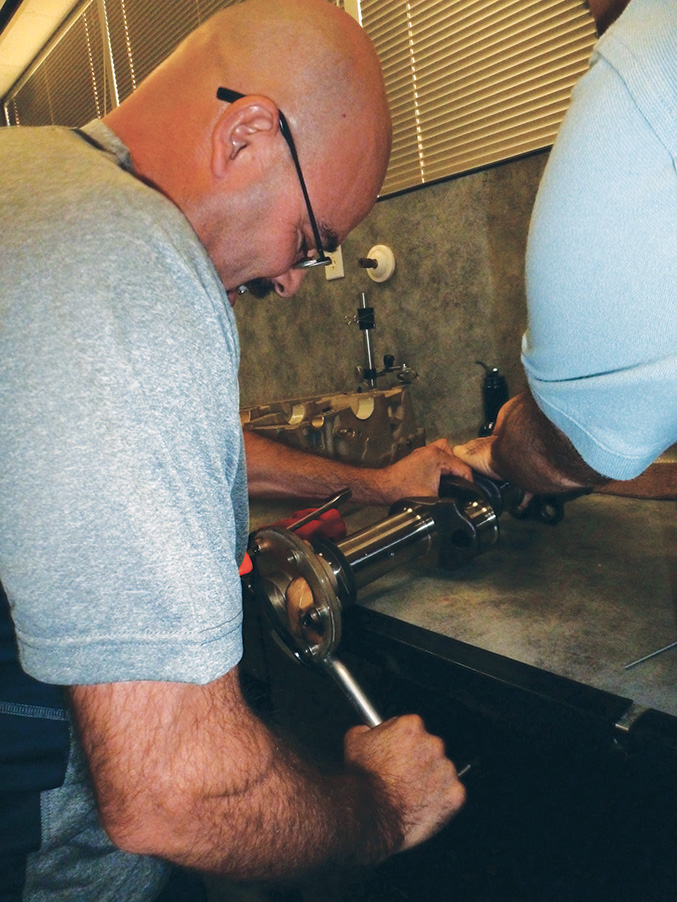
The process begins in earnest with another inspection of parts. An engine assembles around the crankshaft, so we began examining visually and by running fingers over all of the crankshaft surfaces for any burrs. Superior’s cranks are made using the Electro Slag Remelt (ESR) process, which produces a tighter steel grain structure than the industry-standard Vacuum Arc Remelt (VAR) process, according to Superior. They proudly say that no service bulletins or ADs have ever been issued for Superior’s cranks. Customers and technicians also inspect the case at this time, ensuring clear oil galleys, no burrs, and that the main bearing retention dowel is at the correct height. The technicians then check the fit of the crankshaft and camshaft to the case by placing them with the main bearings in place and confirming that clearances are within spec. Positions of each bearing surface are marked on the bearings for later reassembly, and everything is recorded in the engine’s build log.

The nose seal is installed over the propeller flange using the first specialized tool. Our technician, Abel Martinez, made a small wooden wedge that helps the rubber nose seal slide over the lugs. The operation is very quick, but without that wedge he would need an extra hand to free the seal from the protruding lug. Everything is liberally lubricated, but the nose seal needs to be dry in order to make a good seal. So, after the seal is stretched over the flange, it is cleaned with acetone and its spring installed. The crankshaft is then attached flange-down to an engine stand built with rollers and pins that connect it to bushings built into the shop floor.
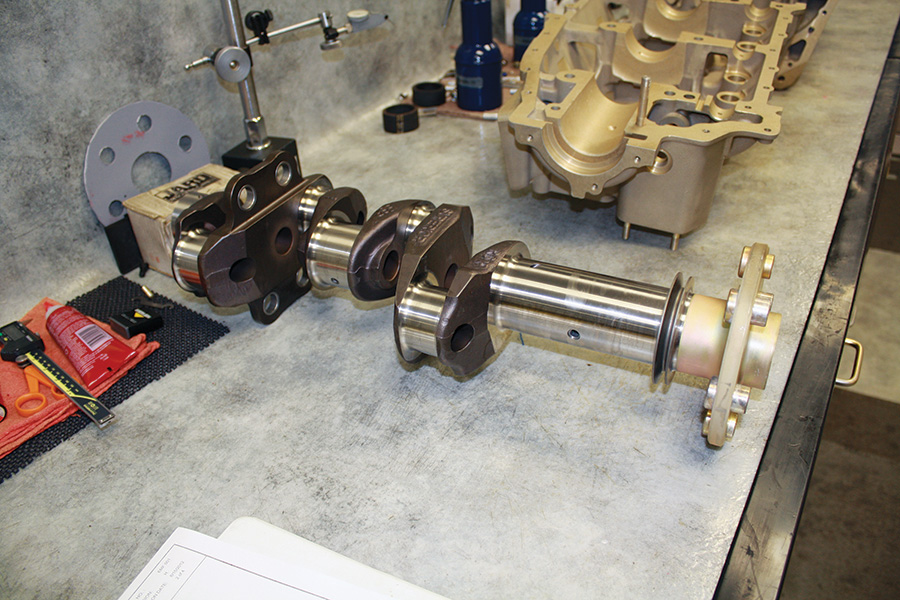
Next, the connecting rods go through the same visual and tactile inspection before the bearings snap in and the rods are assembled around the crankshaft. Everything is pre-lubricated with a mix of straight mineral oil and STP, which makes the mix more viscous and sticky. The machined connecting rods, made from forged VAR SAE 8740 steel, are statically and dynamically balanced. Once in place, the builder torques the connecting rod bolts and checks the clearances with feeler gauges. The fit of piston pins is also checked. Finally, one installs the main accessory gear on the back end of the crank and bends a keyed washer to secure the nut.
Superior sends its torque wrenches for calibration every twelve months, and their serial numbers are recorded in the engine’s assembly log. Our technicians used a click-type wrench and unloaded its torque setting spring as soon as they were done with a particular task to help maintain the calibration specs.
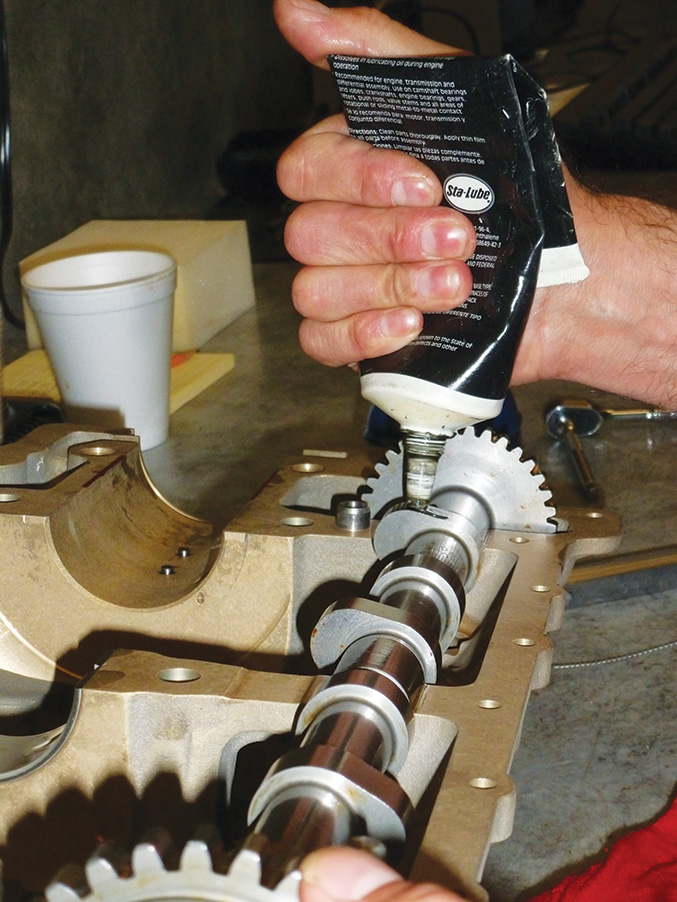
The camshaft of our Superior XP-400 engine with roller lifters had computer-optimized lobes that result in cams with a rounder profile than those designed for standard lifters. Martinez placed the camshaft in each of the case halves, tested for smoothness and fit, and measured and recorded the clearances. After coating it with engine assembly lubricant, he set the cam aside. The XP-400 has a counter-weighted crank, so the counterweights were installed next.
Superior’s XP-series crankcases are designed with reinforced cylinder decks, thrust-face lubrication, and balanced oil flow. They also accept cylinder-cooling nozzles. Martinez showed us these features on the case and then turned his attention to the oil fittings that he installed with gasket sealant on the threads. He checked Superior’s signature roller lifters for fit and finish, making sure they fit snugly into the bored holes in the case. As with all parts, they were pre-lubed, then slid into place, and secured with setscrews, which allow up and down movement but prevent turning within the borehole. Superior’s roller lifters are designed to be removable without splitting the case. Drive gears for the front-mounted governor go into the left case half and the gear lash and clearances are checked and recorded.
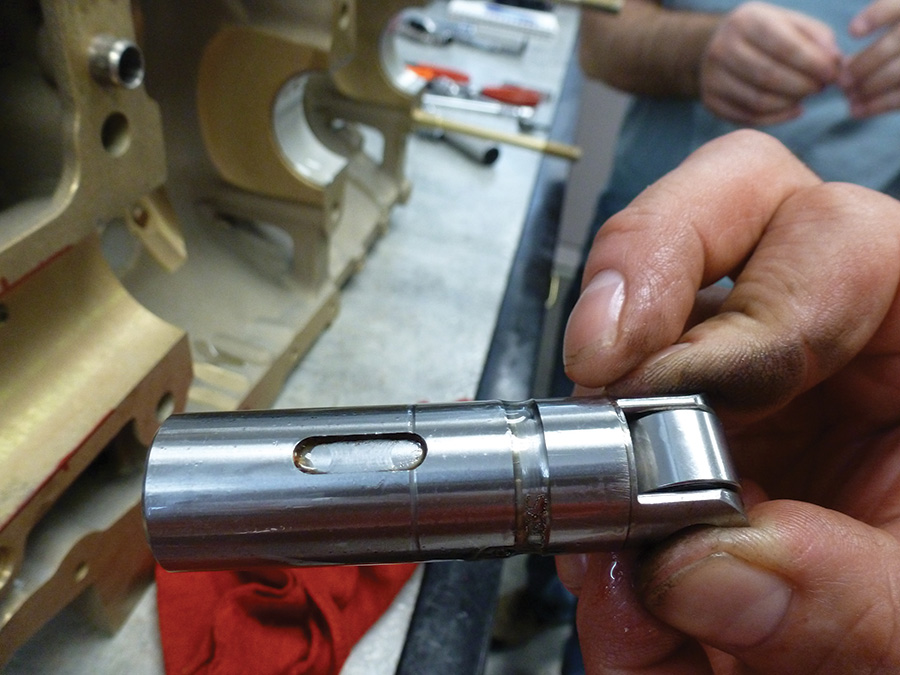
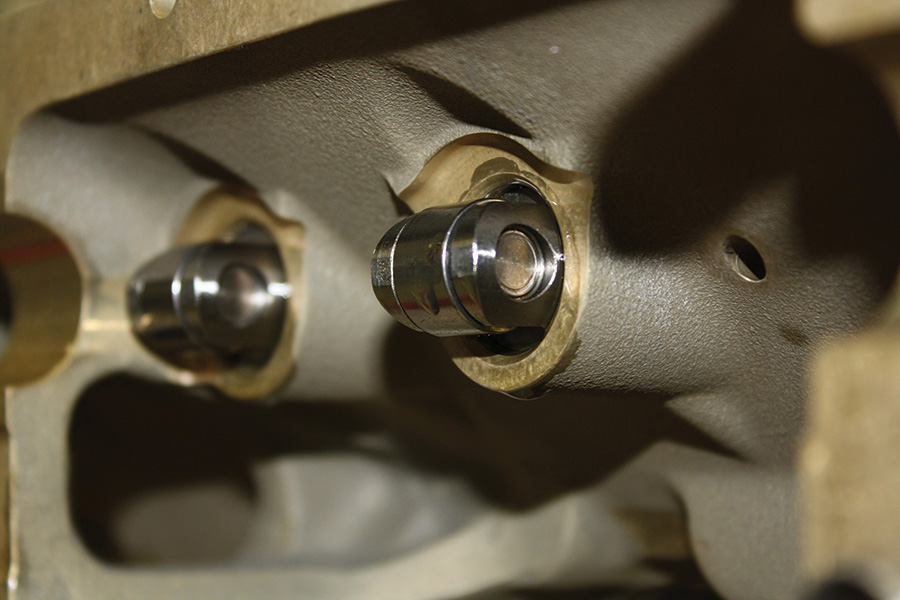
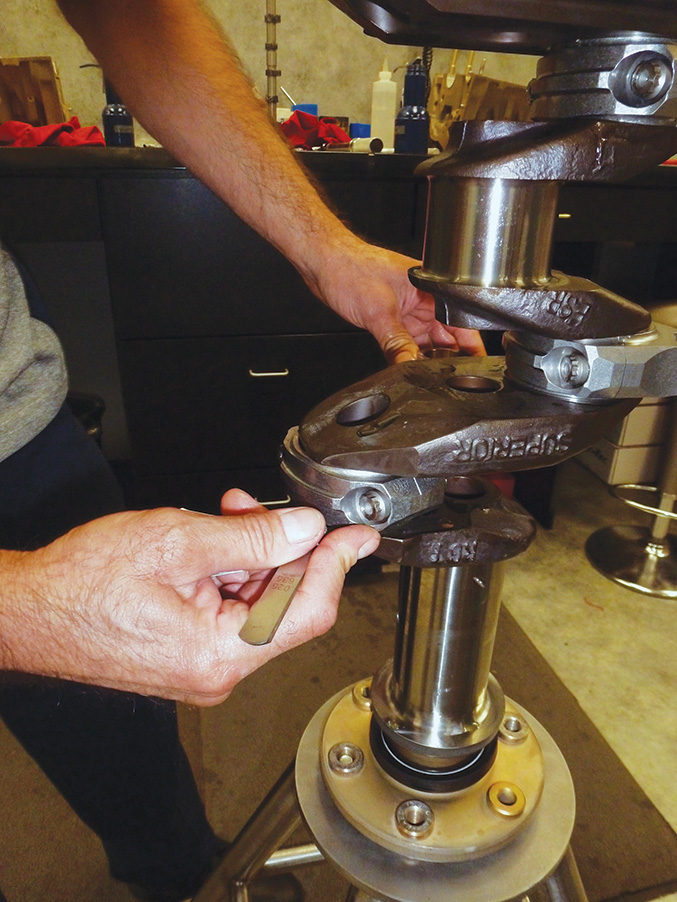
Quality Assurance
The first of four quality assurance checks happens at this point because the next step, case assembly, makes internals inaccessible. The engine builders step back and two QA employees follow a checklist to ensure all parts are installed properly with torques as specified and clearances within specified tolerances. Seeing this operation was a confidence booster for us—after the engine builder checked everything during and after installation, it was checked again by another person. Measurements were recorded in the QA log for the engine.
Crankcase Closed
With all the high-tech sealants and materials available, engine builders still find that a simple silk thread works best for sealing the mating surfaces of the two crankcase halves. Because of the aircraft engine design where the crank and camshaft rotate between the two case halves, using a soft gasket that could vary the distance between case halves is not possible (unless an O-ring is used—see KITPLANES February 2008, “Case Closed”). Engineers rely on a very tight fit where the two sides join. Enter the thread, which has to be grade D silk, 00 gauge. Color is not important. Next, the builder cleans the machined mating surfaces of each case half with acetone and then coats them with very sticky Loctite 515 Flange Seal that will hold the thread in place. He then carefully places the thread along approximately the middle of the mating surface, around the through-bolt holes, and extending to hang about a -inch beyond the ends.
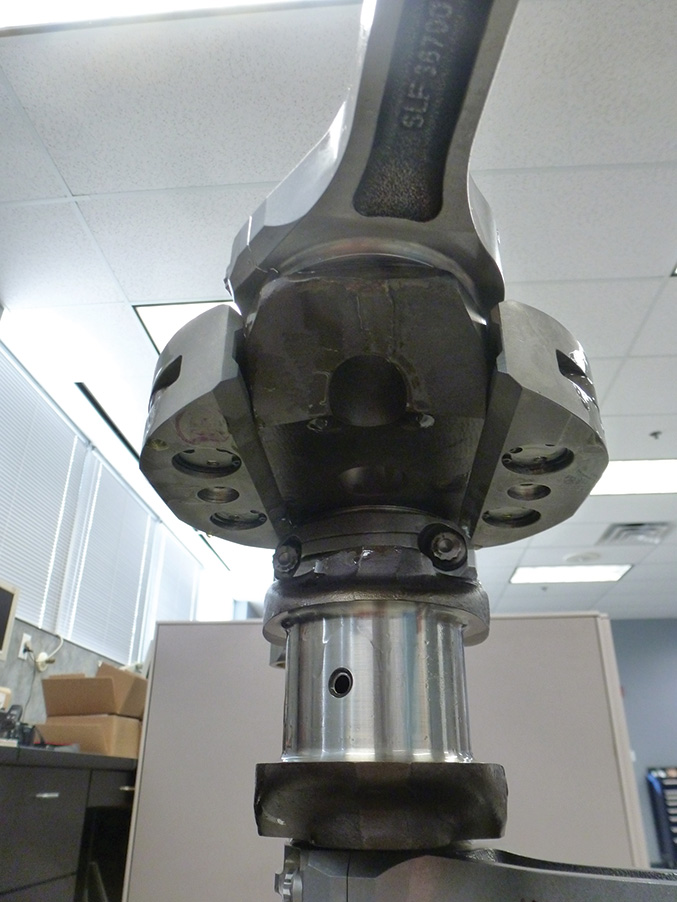
One more step before closure…After applying a liberal coating of thick, grease-like Lubriplate lubricant, with a brush to facilitate keeping the crank bearings in place on the vertically positioned main journals, the builder puts the main bearings in place on the crank.
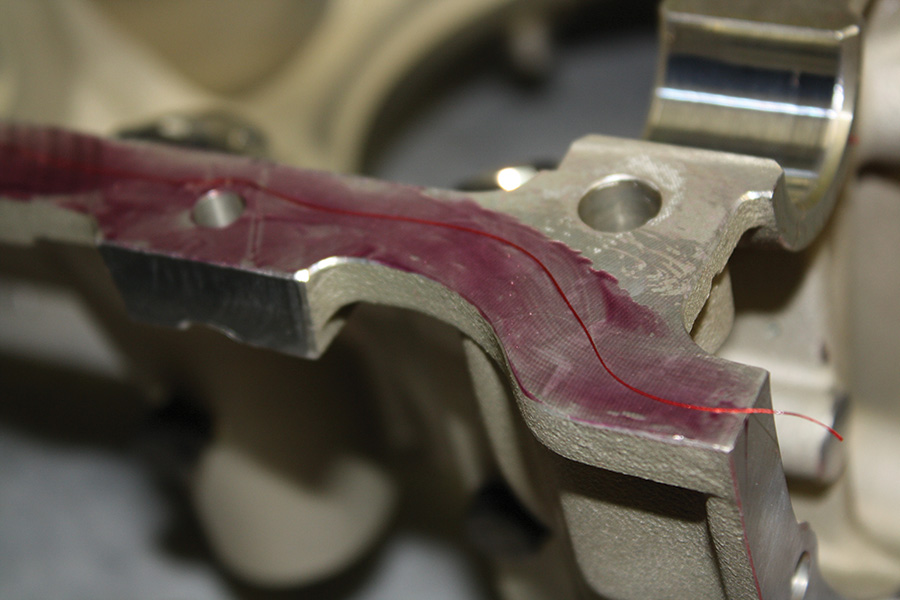
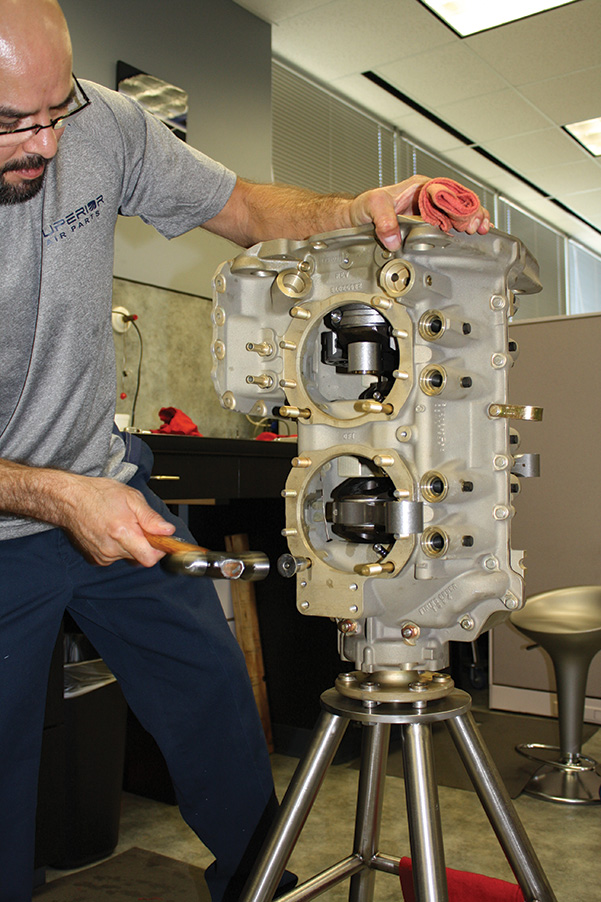
Now comes the part where a helper proves value. One half of the case mates with the crankshaft on the engine stand. The connecting rods are pulled through the cylinder holes in the case and a one-foot plastic dowel is inserted through the piston-pin hole. The half-case is then cocked slightly to wedge the dowel against the outside of the case, pulling the crank and the case-half together.
While the helper holds the pressure on the rod, the technician puts the camshaft in its place, which will stay there on its own—the helper just puts their finger on it for insurance. The right half of the case is then brought to the stand and carefully mated to the left half. When the two case halves almost touch, bolts along the top and bottom of the case draw it closed. The case through-bolts are then hammered in so that they protrude equally on both sides of the case. Hammering the bolts directly would damage them, so a spare prop bushing is used as the hammering surface.
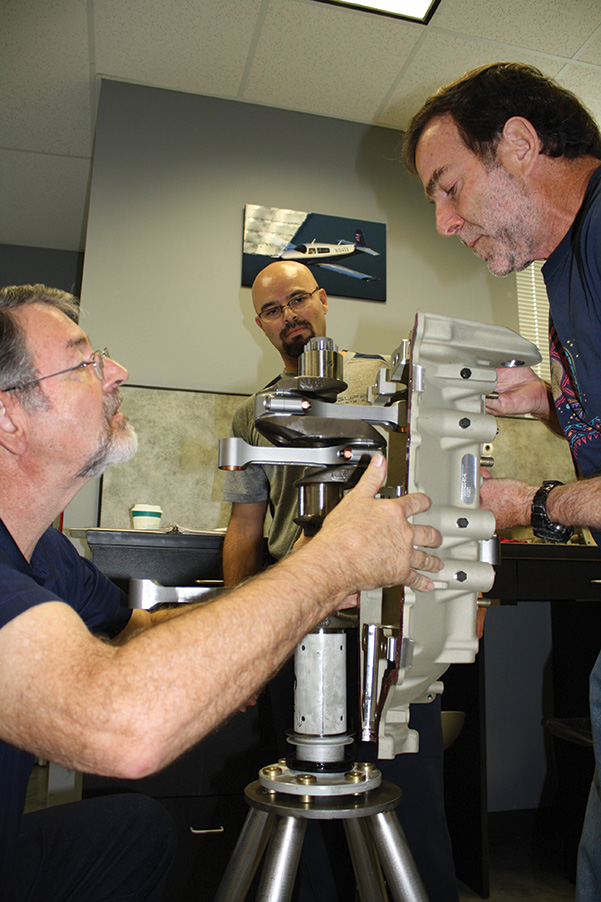
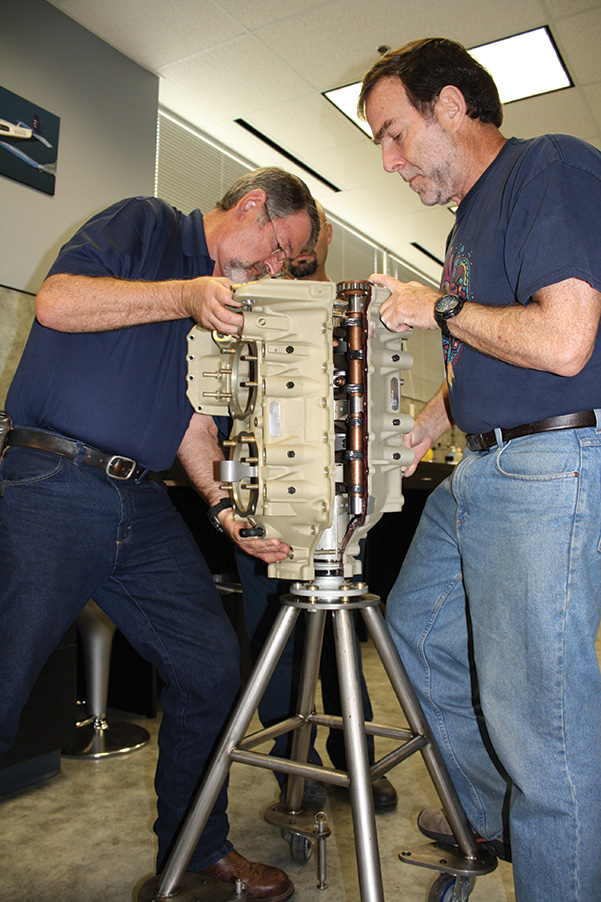
Next month: Top end assembly. We tackle the cylinders and accessories in part two of our engine building school story.
Photos: Louise Hose and Omar Filipovic
About Superior Air Parts
The company debuted in 1967 as a manufacturer of replacement valve guides and grew to a major supplier of engine parts, including cylinder assemblies and—in 2001—complete engines. Superior’s cylinder sales put a serious crimp in its competitors’ cylinder overhaul market. The price of a new Superior cylinder was about $900 compared to $600 for an overhaul, so many plane owners opted to buy new.
Thielert, an aircraft engine company from Germany, brought some good and some bad when they purchased Superior Air Parts in 2006. Thielert was known for its Centurion Diesel/Jet-A engine and for making quality engine parts. Unfortunately, Thielert’s financial problems in 2008 forced it into bankruptcy, which dragged Superior Air Parts down with it. In 2009, Chinese investors purchased Superior, and with a fresh infusion of cash, the company dramatically improved its business outlook. Superior recalled some employees who had been laid off in 2008.
I visited the Superior facility at its peak in 2007 and the difference between then and now is noticeable. There are fewer employees in the cubicles and halls now, but according to Customer Service Manager Brent Henman, the company is on track to achieve its pre-bankruptcy and pre-recession sales numbers. He admitted that many people he met at aviation events told him they didn’t realize Superior was still in business, so the company has some room for improvement in its marketing efforts.
The majority of Superior’s business today comes from supplying parts. Sales of completed engines are comparatively small, although it’s likely that ratio will change once the company ramps up its efforts with the build school and more homebuilders realize Superior engines provide a competitive option.
A new management team, with CEO Tim Archer at the helm, has placed their focus and investment on growing the engine-building business. Keith Chatten, VP of Engineering & Quality, noted that their ratio of engineers to other employees is high compared to other engine-producing companies.
—O.F.
The Engines
Our class built two different four-cylinder engines: Rick Hayes-Roth and Arturo Jaen built an XP-IO-360-B1AD (the most popular model), while Louise Hose and I observed Abel Martinez build an XP-IO-400-B1AD2. Both engine options included a cold air sump, roller lifters, Slick magnetos, Precision fuel injection, and a hollow crank for a constant-speed prop. They were set up with mid-compression pistons.
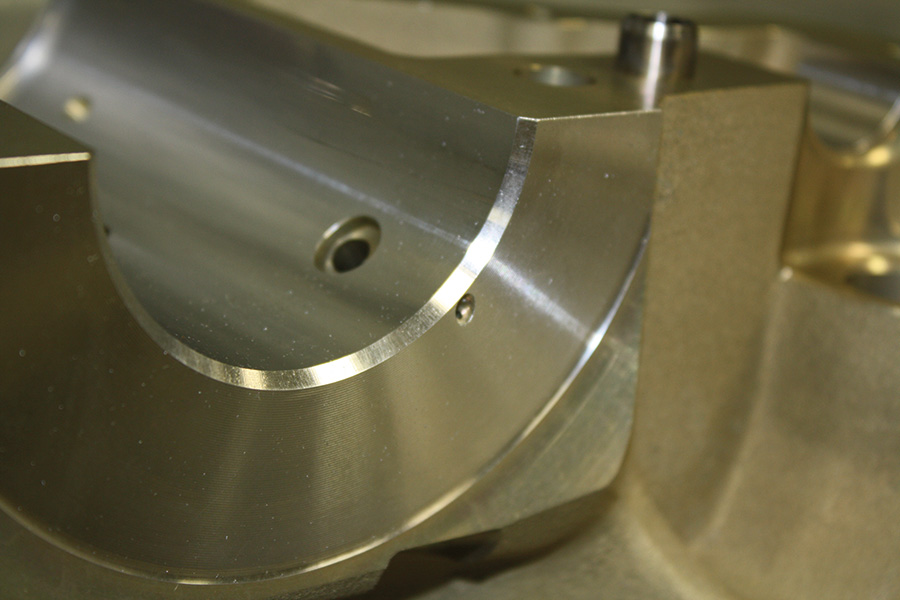
Even though these engines are Experimental, many parts are FAA-PMA approved. The XP-360, for example, can be built with 100% approved parts if the customer orders standard tappets. The roller-lifter technology is Experimental.
Superior still has a small stock of O-360 cases made by Thielert, and that’s what was used on Hayes-Roth’s engine, while the XP-400 case was supplied by Kurt Manufacturing in Minnesota. Both were works of art, but a notable difference was that Thielert alodined their cases first, and then machined them, while Kurt Manufacturing completes all machining first and then applies the alodine treatment.
Superior’s crankcases are designed with pressurized oil flow to thrust faces, provisions for cooling nozzles, and reinforced web area between cylinders. The company says they observed where Lycoming and other manufacturers were having problems with the engine design and avoided those issues in the XP-series. Their Millennium cylinders have a good reputation, and the company understandably takes pride. According to Superior, the Millennium cylinders in XP-360 engines consistently produce 178 to 183 hp on the dyno.
The engine warranty covers 24 months or 1000 hours of operation, whichever occurs first, and the date of first operation must be within 12 months of delivery.
—O.F.
Removing the Mystery to Engine Building
I didn’t grow up in my dad’s shop. In fact, my dad didn’t have a shop in our urban home. And, I’m old enough that my high school wouldn’t allow me to take auto (or any) shop class. “There aren’t enough slots for the boys. How could we let a girl take shop?” my school counselor asked me with indignation when I tried to sign up. In the time since, I really haven’t learned much about engines. So, when we were building our RV-3B a few years ago, I expressed interest in buying a Superior Engine and assembling it myself in their Engine Build School. Unfortunately, the school had ceased, Superior seemed focused on supplying parts, and we bought another engine. I learned a little as we installed that IO-320 and its accessories on the -3B, but my ignorance about engines continued to bother me.
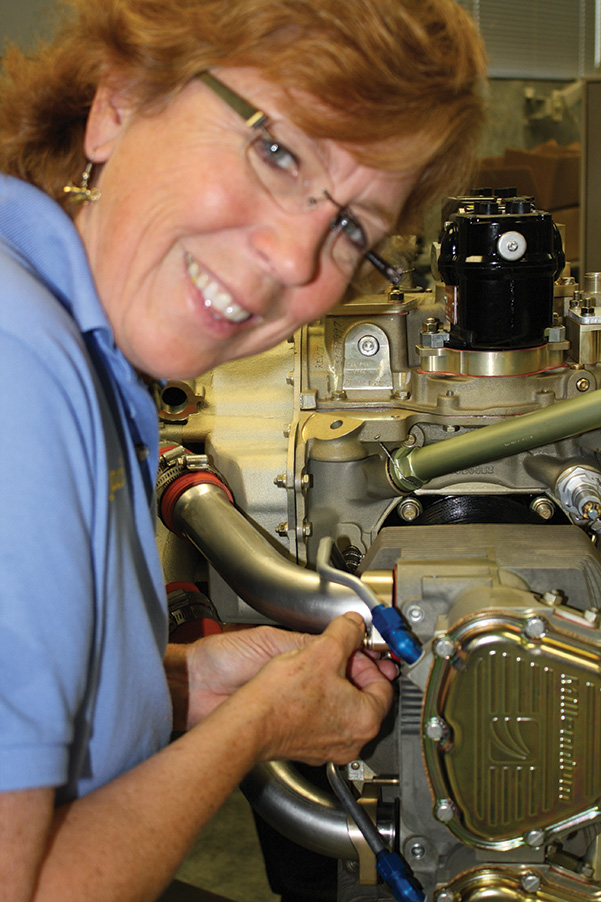
Thus, attending the revived Superior Engine Build School provided an opportunity that I craved, and I couldn’t be more delighted with the experience. I came away with a much better understanding of what all those hidden pieces look like and do. A crank is no longer something in a junior high school science textbook. I understand not only what the rings look like, I know how to gap them and ensure the correct fit. Tappets and roller lifters? Got it! Angle-valve vs. parallel-valve? I can now recognize the difference. Need to replace a cylinder? Well, I’ll still want a mentor standing nearby, but at least I understand the basics now.
If I were to sum up my strongest impression from my three days in Coppell, it is that building these aircraft engines isn’t hard. It’s a matter of assembly and remaining focused on the instructions. One cannot fail to complete a step or ensure that things like clearances and gaps are within tolerances without risking very serious consequences. But, the most difficult skill I saw executed was proper safety wiring, a procedure we all learned with our first oil change in an aircraft. The old wisdom that I’ve always heard, that these engines are really just mid-20th-century tractor engines, came back to me as I realized they really are simple machines.
—Louise Hose

